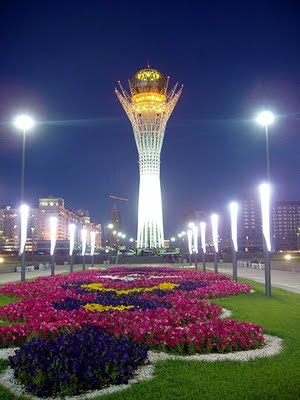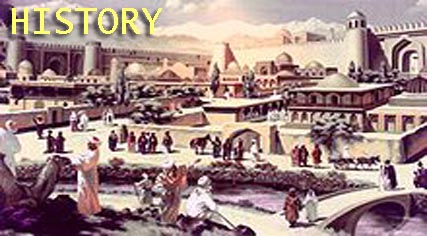
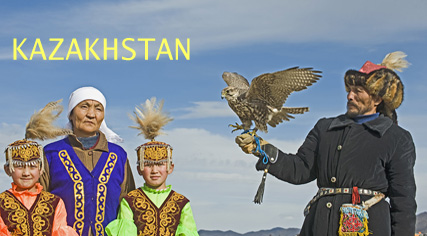
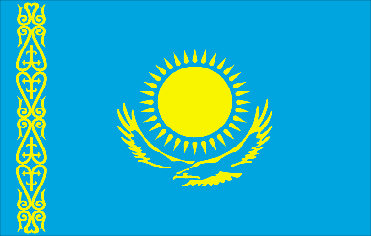
Kazakhstan-History,Soviet,Flag
Timeline
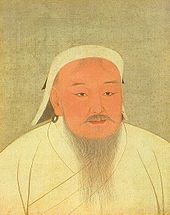 1st-8th centuries - Turkic-speaking and Mongol tribes invade and settle in what is now Kazakhstan and Central Asia.
1st-8th centuries - Turkic-speaking and Mongol tribes invade and settle in what is now Kazakhstan and Central Asia.
8th century - Arab invaders introduce Islam.
1219-24 - Mongol tribes led by Genghis Khan pictured right invade Kazakhstan and Central Asia. Later they become assimilated by Turkic tribes that make up the majority in their empire.
Late 15th century - With the formation of the Kazakh khanate, the Kazakhs emerge as a distinct ethnic group.
Early 17th century - Kazakhs split into three tribal unions, the Elder, Middle and Lesser Zhuzes, or Hordes, which were led by Khans.
Russian domination
1731-42 - The Khans of the three Zhuzes formally join Russia in pursuit of protection from invasions from the east by the Mongols.
1822-68 - Despite many uprisings, Tsarist Russia retains control over the Kazakh tribes, deposing the Khans.
1868-1916 - Thousands of Russian and Ukrainian peasants are brought in to settle Kazakh lands; first industrial enterprises set up.
1916 - A major anti-Russian rebellion is repressed, with about 150,000 people killed and more than 300,000 fleeing abroad.
1917 - Civil war breaks out following the Bolshevik revolution in Russia.
Soviet Union
When the Soviet Union came Kazakhstan was invaded by the Russians in 1920
all the Baltic State, Estonia, Latvia and Lithuania were part of Russia so were Mongolia Kyrgyzstan, Turkmenistsan,
Armenia, Georgia, Azerbaijan and Uzbekistan were all part of the new Soviet Union.
Russia tried to invade Afghanistan in 1979, but failed. Later in the 20th century Kazakhstan and all the countries broke away from the Soviet Union
Baiterek Tower, Astana - the tower was built when Astana become the capital taking over from Almaty. |
The Baiterek tower has become a monument of the world, the tower syomblises a tree with an egg in the nest from a classic fariy tale of a bird and his egg. The tower is 105 metres tall but at 97 meters there is a deck for tourists to get a birds eye veiw of the city.The deck at the top is at 97 metres for reason thats the time when Astana became the capital 1997. And that's also why the tower is here today to say that Astana is the new capital. |
Independence
In 2007, Kazakhstan's parliament passed a law granting President Nursultan Nazarbayev lifetime powers and privileges, immunity from criminal prosecution, and influence over domestic and foreign policy. Critics say he has become a de facto "president for life."
Flag
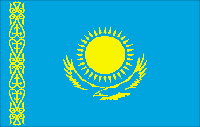 The colour blue has religious significance to the many cultures of Kazakhstan.
The colour blue has religious significance to the many cultures of Kazakhstan.
The sun represents bright future, the sun rays are shaped like grain to represent the farming in the country.
The eagle under the sun is found in Kazakhstan
The pattern on the side is ornamental representing rams horns.
